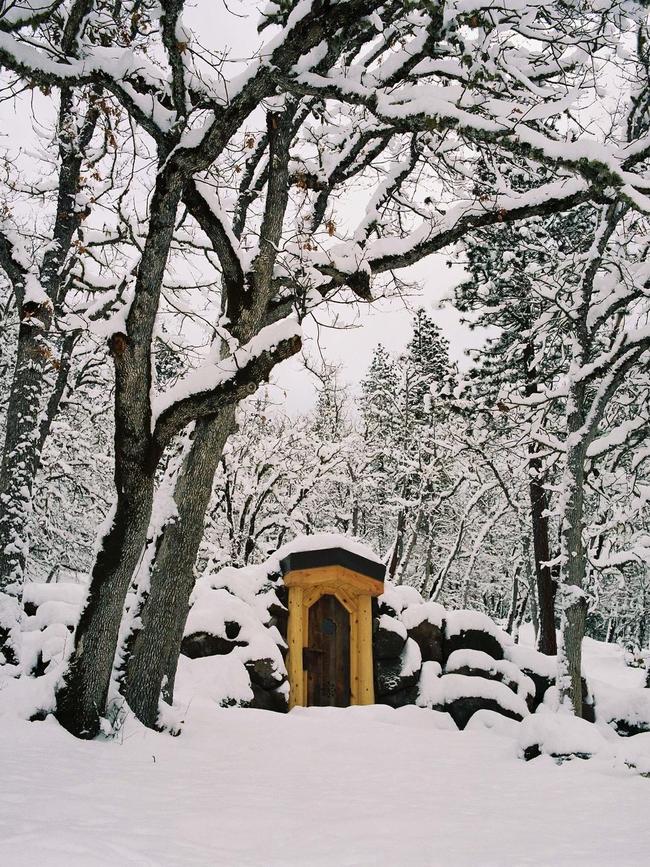Aaron Rodgers is going on a Darkness Retreat. What is that?
The Green Bay Packers quarterback hopes isolation in complete darkness for days will help him decide his next career move.

Green Bay Packers quarterback Aaron Rodgers is about to make one of his biggest decisions. Literally in the dark.
“I’ve got a pretty cool opportunity to do a little self-reflection in some isolation, and then after that I feel like I’ll be a lot closer to a final, final decision” on his career, he said last week on the Pat McAfee Show, a sports talk show.
He is deciding whether to play again next season, either with the Packers or another team, or if he will retire.
His plan to find his way? “It’s a darkness retreat,” said Rodgers, 39, shining the spotlight on a little-known wellness therapy.
Rodgers said on the talk show he planned to head to one after the Super Bowl, spending three or four days sitting in “isolation, meditation, dealing with your thoughts.”
He talked more about his feelings about the coming retreat on McAfee’s show on Tuesday, saying he was open to the experience.
The four-time NFL MVP has previously said he had used psychedelics such as ayahuasca in an effort to learn more about himself. Rodgers or his representatives couldn’t be reached for comment.
A darkness retreat is just what it sounds like: people spend time in a space that’s completely devoid of light.

It stems from ancient practices from many cultures, such as when monks sought spiritual guidance by meditating in a cave.
These days, a dark retreat can cost $US1000 ($1500) and comes with food service, toilet paper and a yoga mat.
A patron is usually led into a room with a candle and given a tour to familiarise them with the surroundings. Then the candle is extinguished.
Some find their way around the pitch dark with their hands in front of them. Others crawl. Robbie Bent sought out a darkness retreat at the Sky Cave Retreat near Ashland, Oregon, in the summer of 2020 because he was burned out and overwhelmed by work.
He was so busy scrolling on Twitter he missed his flight.
“The idea was to kind of learn a bit about myself, relax and reset,” said Bent, the founder of Toronto-based company Othership, which builds bathhouses with saunas and ice baths.
He spent eight days inside a 300-square-foot, soundproof, lightproof room, built into the hillside. On the second day, when he decided to take a bath, Bent got down on his hands and knees to find the tub’s leg.
“It’s not like you’re in a rush. You’re there for hours,” he said. “The other alternative is just sitting there.”
Sometimes with a wrong turn Bent would get lost. He would then have to grope around in the dark to find a familiar wall.
“Your first instinct is fear, especially when you’re walking around and sort of realise how much we rely on sight for our safety,” he said.
He was eventually able to let go of his childhood fear of the dark. “It was really good training for life when you’re feeling overwhelmed and afraid,” Bent said.
A week at Sky Cave can cost up to $1350. A wood-burning stove outside the rooms heats up the space, and Scott Berman, the owner, delivers meals each evening and checks on guests.
Some guests venture outside at night before they fully settle in – where only stars or the moon add a little light in the rural area.
That helps them get comfortable spending time in the dark, Berman said.
During the first few days, many sleep for long stretches.
“Getting to rest or sleep for 20 hours is quite a treat, because you wake up and if you’re still tired and it’s dark and you have nothing to do, you just finally give your body permission to actually fully rest and restore itself,” he said.
Former monk Severin Geser added the darkness retreat concept at his Hermitage Retreats near Lake Atitlan in Guatemala, from his own experience with the practice in Thailand.
There are cushions for meditation in the room, organic food, fresh towels for a shower and a bed with extra blankets.
A dark retreat isn’t for those uninitiated in meditation or other intensive experiences, he said, calling it an “advanced practice.” Geser decides how much time a patron will spend in the dark.
“The length depends on where the person is in his life – have you done something like that before? Have you been with yourself before?” he said.
“Normally, it’s between one and five days. That’s enough.”
Anna Jelen, an artist in Arosa, Switzerland, grew curious about spending time in the dark when she listened to a podcast.
For her first time in 2021, she went into a bunker that a friend had for 24 hours. It had a table, chair, bed and a toilet.
“I wanted to see what happens with my thoughts and darkness,” she said. “The question that triggered it for me was, ‘is there something I can find in the darkness?’”
She asked her partner to provide her food. When they arrived at the door, Jelen put on a blindfold to accept the plate.
“I didn’t know what I ate,” she said. “I remember maybe tasting a green olive, and it was the most incredible feeling I ever had.”
She put toothpaste directly in her mouth to avoid missing the toothbrush.
Her biggest challenge was falling asleep. “You lie down and close your eyes and nothing changes,” she said. “You wake up and open your eyes, and it should be light, and it’s not.”
Jelen, who said she had never done drugs or psychedelics, said that after some time in the dark she had visions of animals, including an elephant, an eagle and a monkey, walking across the room.
“It was so weird to see something when you have your eyes open, and you know it’s not there. That was really strange for me, but very beautiful,” she said.
She also meditated, and her to-do list started to stress her out less. “The darkness gave me clarity,” said Jelen, who now hosts dark retreats in her home’s basement.
Eduard Shlepetskyy, the founder of Ective Automation, a digital robotics company in Bratislava, Slovakia, embarked on a seven-day dark retreat in the village of Zajezova in 2021.
The space was modest, and he brought essentials, such as a resistance band for exercise, a pen and a notebook.
Shlepetskyy used a chocolate bar as a ruler to move down the page as he wrote in the dark.
He said he wrote notes on his daily life, observations about how his mind worked and some thoughts on his business.
On the fourth day, Shlepetskyy said he found what he was looking for after a six-hour meditation and decided to cut short his time.
“That was the breaking point,” he said.
“I realised we don’t get enough time during our day to think about the things that bother us.”
Plus, he remembered he needed to get his car inspected in time to cross the border to attend the wedding he was going to after the retreat.
The Wall Street Journal



To join the conversation, please log in. Don't have an account? Register
Join the conversation, you are commenting as Logout